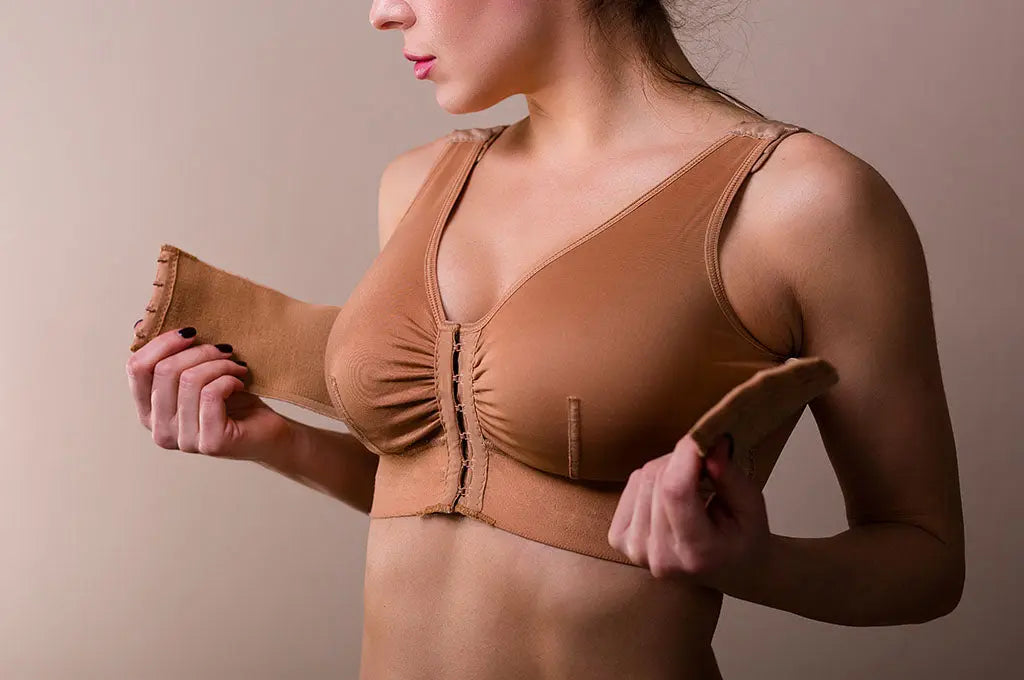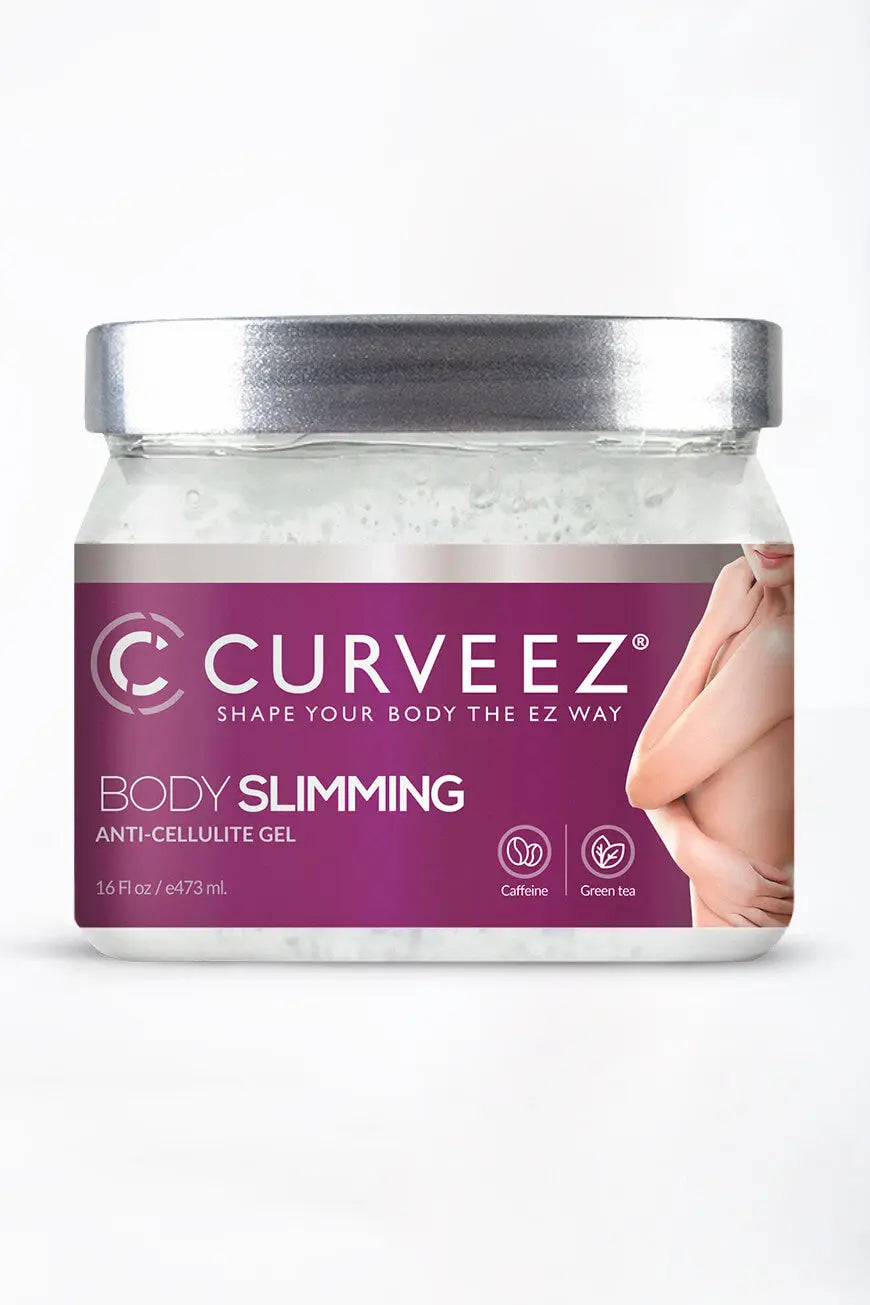
Welcome to our comprehensive guide on selecting the perfect post-surgical bra for your healing breasts.
Whether you are considering a breast expansion, reducing big breasts, or seeking your perfect breasts and want to know which is the best bra for your post-surgery period, this post has got you covered in everything.
Breast surgery is a significant decision that can be a life-changing experience. If you are considering this, first of all consult your doctor to make the right decision.
The type of breast surgery that is right for you will depend on your needs and goals. But, again, talk with a qualified surgeon about your options to get accurate and personalized information.
Having stated that, first, let's see an overview of common types of breast surgeries.
Enhance, restore, heal, transform: a guide of different types of breast surgeries

There are many types of breast surgery for both aesthetic and health purposes. Health purposes here usually mean cancer breast surgeries.
Aesthetic breast surgeries
Aesthetic breast surgeries are performed to improve the appearance of the breasts. Some common surgical procedures include:
- Breast augmentation: It is a popular cosmetic surgery, also known as "augmentation mammoplasty", a surgical procedure aimed at increasing the size and/or enhancing the shape of the breast. This breast expansion involves the insertion of breast implants which are made of silicone or saline. They are inserted through incisions in the breast crease, under the arm, or around the areola.
- Breast reduction: Also known as “reduction mammoplasty”, this procedure reduces the size and/or weight of heavy, large breasts to achieve a more proportionate size and alleviate discomfort produced by overly huge breasts. A breast reduction surgery involves the removal of excess breast tissue, skin, and fat through incisions in the breast crease.
- Breast lift: Also known as “mastopexy”, this surgery improves sagging or drooping breasts by lifting and reshaping them, resulting in a more uplifted and youthful appearance. In a breast lift procedure, excess skin and tissue are removed from the breasts, and the nipples and areolae are repositioned.
- Breast reconstruction: This is a surgical procedure performed to restore the shape, size, and appearance of the breasts (one or both) after a mastectomy or lumpectomy (see them below), usually made for cancer treatment. Breast reconstruction can involve various techniques, including implants, tissue expanders, or using the patient's own tissue.
- Nipple/areola reconstruction: This procedure can be performed to repair or reconstruct the nipples and/or areolae after cancer, injury, or other medical conditions. Nipple grafts or tattoos are used to recreate the nipples and areolae.
- Breast explant: Also known as “breast implant removal”, it is performed to remove breast implants. It involves extracting the implants and any scar tissue formed around the implants.
Breast explant surgery can be performed for both aesthetic and health purposes. Some women choose to remove their breast implants due to dissatisfaction with the size or appearance conferred by the prostheses. But others may undergo this surgery because of implant-related complications such as pain, capsular contracture, or breast implant illness.
Breast explant surgery can also address some aesthetic issues resulting from the explant. After implant removal, the breasts may sag, droop, or appear misshapen. That's why many women choose implant removal with a breast lift. The goal is to restore the natural shape and appearance of the breasts.
Cancer breast surgeries
Cancer breast surgeries are performed to remove breast cancer cells. Some common surgical procedures include:
- Mastectomy: This surgery implies removing the entire breast. There are different types of mastectomies depending on the extent of the cancer and the patient's specific circumstances, including:
- Simple mastectomy: involves the removal of the entire breast tissue and nipple.
- Modified radical mastectomy: implies removing the breast tissue, the nipple, and lymph nodes in the underarm area.
- Radical mastectomy: involves the removal of the breast tissue, nipple, axillary lymph nodes, and chest muscles.
- Lumpectomy: Also known as "partial mastectomy" and "breast-conserving surgery", this procedure implies removing a cancerous tumor and a margin of surrounding healthy tissue while preserving as much healthy tissue as possible. The tumor is removed through an incision in the breast crease. This procedure is often followed by radiation therapy to ensure the removal of cancer cells that may have remained.
- Axillary lymph node dissection: This surgery entails the removal of lymph nodes from the armpit area. The lymph nodes are removed through an incision in the armpit. Most of these procedures are performed under general anesthesia and take some hours.
It is important to remember that each individual's case is unique. The appropriate breast surgery option will depend on various factors, including the patient's health, personal goals, and the recommendations of her healthcare team.
Consult a breast specialist or qualified plastic surgeon to discuss your concerns and needs.
Essential steps for optimal recovery: what to do after breast surgery

As usual in almost all surgery, the postoperative period is crucial for healing and achieving optimal results.
After a breast operation, there are many things a woman can do to improve and speed up the post-operative process.
One of the most important is using a special bra for breast surgery recovery.
After any breast surgery, you may experience some pain and swelling. Your surgeon will instruct you on caring for your incisions and managing any pain or discomfort. Surely he will recommend you use a compression garment on the surgical area for some weeks.
A supportive compression bra can help provide stability and support to the breasts and comfort during the healing process. It can minimize movement, reduce strain on the surgical area, and help reduce swelling and bruising.
Specifically, a bra can assist women during the post-operative recovery period of breast surgery in these ways:
- Support and comfort: Following breast surgery, these may remain sensitive, swollen, or tender. Wearing a supportive bra can help minimize movement, reduce pain, and provide comfort by offering gentle compression and reducing strain on the surgical place. This is especially important after breast tissue removal surgery, as the remaining tissue can stay sensitive and easily bruised.
- Stabilization: A properly fitted bra can help stabilize the breasts, especially after breast augmentation or lift procedures. It can help maintain the desired position, prevent excessive movement, and support the healing tissues.
- Compression: In cases such as after reconstruction or breast reduction surgery, physicians may recommend using a post-surgical compression bra. This type of bra provides gentle pressure, which can help minimize swelling and bruising, improve blood circulation, and promote healing. This is important in the early stages of recovery, as swelling can make it difficult for the body to heal correctly.
- Shape and contour: Wearing a well-fitting bra during recovery can help maintain the shape and contour achieved through the surgery. It can help support the breast implants, if applicable, and aid in the long-term aesthetic outcome.
- Drainage: Some bras have drainage ports that help remove excess fluids from the breasts. This can help reduce pain and discomfort and speed up healing.
- Security and confidence: The above-mentioned physical advantages that a bra provides for a post-breast surgery process also bring significant feelings for women, such as security and confidence during recovery.
It is crucial to note that every patient's post-operative instructions may vary, and it is essential to follow the surgeon's recommendations regarding bra usage for each case. That includes the specific type of bra to use and when to start wearing a bra after surgery.
Some surgeons may recommend specific surgical bras or compression garments, while others may advise using supportive sports bras or specialized post-surgical bras.
Furthermore, it is worth mentioning that the duration of post-surgical bra usage will vary depending on the type of surgery and individual healing progress. It varies from person to person. Some surgeons may recommend wearing a support bra for several weeks or months, while others may indicate a gradually transitioning to regular bras.
However, by applying your surgeon's guidelines, wearing a proper bra, and following these tips, you can help improve and speed up the healing process and get the desired outcome.
Improving your healing journey: Key factors to consider when choosing your post-surgical bra

It is vital to choose a bra that is specifically designed to use after breast surgery. These types of bras have features that provide support and compression and are typically made from soft, breathable fabrics to minimize irritation and promote healing.
The specific type of bra recommended will depend on the type of surgery the woman has undergone and the surgeon's instructions, so it's essential to follow his guidance.
However, to give you some preliminary ideas, here are some key factors to keep in mind when choosing a bra to use after breast surgery:
- Type of surgery: It will determine the amount of support and compression needed. For example, a woman who has undergone a mastectomy will need a post-surgery bra that provides more support than a woman after a breast augmentation. Learn more about this subject here-in-below.
- Support and comfort: A bra should offer adequate support and comfort for your operated breasts. Depending on the type of surgery, you may require different levels of support. For example, a support bra with an underwire or strong fabric may be recommended for a breast augmentation recovery or a breast lift.
On the other hand, after reconstruction or breast reduction surgery, a bra with gentle compression may be more suitable. The bra should minimize movement and provide a comfortable fit without causing pain, pressure points, or discomfort.
- Front closure and adjustable straps: After breast surgery, you may have limited mobility or discomfort in the chest area. Consider a front-closure bra instead of a back-closure one, as it is easier to put on and take off. Adjustable straps and bands can also provide a customized fit and accommodate any changes in breast size or swelling.
- Bra sizing and adjustability: The correct bra size is crucial for comfort and support. Your breast size may have changed due to surgery, so it is important to get measured by a professional or follow your surgeon's guidance. Also, you can consider a bra with adjustable hooks or closures to accommodate changes in breast size, swelling, or fluctuation during the healing process.
- Breast size and shape: The size and shape of the breasts will also affect the type of bra A woman with big breasts will need a bra that provides more support than a woman with small breasts. It is essential to choose a bra size that fits properly. A bra that is too tight or loose can be uncomfortable and may not provide the needed support.
- Soft and seamless fabric: Choose a bra made of soft, breathable, and seamless fabric. This can help minimize skin irritation, rubbing, or chafing on sensitive surgical incisions or scars. Avoid bras with lace, seams, or embellishments that could potentially irritate the surgical area.
In any case, follow your surgeon's recommendations. He will provide personalized instructions regarding the type of bra to wear after your specific breast surgery.
Your surgeon will also recommend the level of support and compression you need, how to use the post-surgery bra, when and how long to use it, and when to transition to a regular bra.
Always follow its guidance as it best understands your needs and the desired surgical outcomes.
Tailored recovery: choosing the right bra according to your specific breast surgery

There are different bra recommendations when choosing the appropriate post-surgery bra for the different types of breast surgeries. For example, obviously, a breast augmentation is not the same as a mastectomy, so the bra must reflect these differences.
Here are some specific considerations for different types of breast surgeries:
- Breast augmentation: For a breast augmentation recovery, your surgeon may recommend wearing a supportive bra that offers proper lift, support, and compression. Look for bras with underwire or strong fabric to provide stability and shape to the augmented breasts. The after breast augmentation bra should also be made from a breathable fabric and should have adjustable straps.
Your surgeon may also recommend avoiding push-up bras or bras with excessive padding that could interfere with the healing process.
- Breast reduction: For a breast reduction surgery recovery, choose a bra that provides support, compression, and comfort. A good option is a soft bra or a bralette.
Your surgeon may recommend a bra with a wide band and adjustable straps to minimize pressure on the incisions and provide adequate support to the reduced breasts.
Bras with soft, breathable, seamless fabric and a compression component can help reduce swelling and promote healing.
- Breast lift: Following this type of surgery, you will need a bra that provides support and helps maintain the breasts in the new position. Look for bras with full coverage and underwire to offer maximum support. And adjustable straps can help achieve a customized fit.
Your surgeon may also recommend a bra with a wide band under the bust to distribute weight evenly and minimize strain on the surgical incisions.
- Breast reconstruction: Depending on the type of reconstruction, you may need bras with different levels of support, such as surgical bras or post-mastectomy bras. These bras are often designed to accommodate surgical drains, provide gentle compression, and support the healing tissues.
- Breast explant: Following a breast explant surgery, you will need a bra that gently supports the breasts, minimizing discomfort and reducing potential swelling.
A soft fabric bra with a wide underband will offer comfort, stability, proper healing, and optimal breast shape. Also, a front-closure bra for easy dressing and adjustable straps for a personalized fit, supportive but not restrictive, will help during post-surgical sensitivity.
Additionally, a bra with pockets will allow using breast pads or prostheses if needed to aid in symmetry and provide a more natural appearance.
- Mastectomy: After a mastectomy, your surgeon may recommend wearing a specialized post-mastectomy bra or breast prosthesis. These bras are designed to accommodate breast prostheses and provide comfort and support to the surgical area.
They often have pockets to hold the prosthesis securely and may offer front-closures or adjustable straps for easy donning.
- Lumpectomy: In this case, the bra should provide gentle support without putting excessive pressure on the surgical site. The surgeon may recommend that the bra has a firm fit to prevent movement or shifting of the breasts.
Also, an adjustable strap bra or a front-closure bra facilitates easy dressing and undressing.
- Nipple/areola reconstruction and Axillary lymph node dissection: Consult your surgeon if you need a surgical bra after these surgeries. In any case, it is worth using a comfortable, supportive bra.
The support bra should be wireless and seamless, made with soft, breathable fabric and adjustable straps, and provide gentle compression to promote curing and comfort during recovery.
The post-surgical bra will help support the healing tissues and prevent irritation by rubbing against clothing. It will also help to reduce swelling and bruising.
Looking ahead: Revitalizing your healing breasts

It's important to note that these tips are general guidelines, and the particular recommendations may vary depending on the specifics of your surgery and your surgeon's guidance.
As said before, always consult your surgeon for personalized indications on choosing the best bra after your specific breast surgery. He can provide detailed guidance based on specific surgical procedures and personal needs.
Ultimately, the primary focus of the bra should be on comfort, support, and promoting optimal healing during the recovery process. Then, you should look for high-quality materials, adjustable features, and a proper fit.
We hope you can make the best decision and be a satisfying change in your life.
Embrace the journey towards the beautiful breasts you desire with confidence, knowing that the best support bra for your specific case will provide you the comfort and support you need… and deserve!








